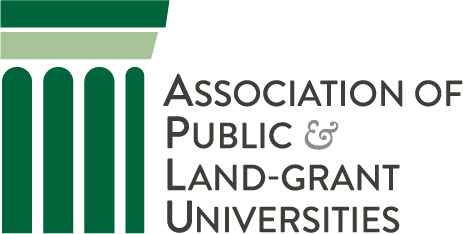Striving toward equity by leveraging digital tools, such as adaptive courseware, was the focus of ADAPT, a student-centered digital learning showcase presented in December 2021 by Every Learner Everywhere, the Association of Public and Land-grant Universities, and Achieving the Dream.
The webinars and forum discussions in the virtual event underscored the potential of adaptive learning and leveraging digital tools to provide personalized learning to foster equity. But they also require careful planning to use effectively alongside equity-centered teaching practices, emphasized Van Davis, Service Design and Strategy Officer at Every Learner Everywhere, in the closing plenary session.
The event showcased work in equity-centered digital learning in recent years, including an all-student panel, faculty in pilot projects, and instructional designers and other academic leaders.
All together, the sessions added up to an inspiring daylong progress report on digital learning featuring the insights of educators and learners who have been working with adaptive courseware first-hand, says Emilie Cook, Communications Manager for Every Learner Everywhere. “Strategically, ADAPT was built around the voices of the institutions and their students.”
Recordings of the presentations and forums are available on the ADAPT event website and on the Every Learner Everywhere YouTube channel.
Cook offered as other inspiring examples, sessions on:
- creating more equitable courses through a continuous improvement process;
- teaching effectively with adaptive courseware; and
- how to use data in the classroom,
Kicking off and summing up
The keynote address from Sharon Leu, Executive in Residence at Jobs for the Future, described the opportunity to address structural barriers to social and economic mobility with technology in post-secondary education. She said promoting equitable teaching and learning is one of the most pressing challenges of our time.
Davis’ closing plenary noted how structural inequities are reflected in the most recent graduation rates at four-year institutions:
- Native American and Alaskan native — 41.5 percent
- Black — 45 percent
- Latinx — 58.7 percent
- White — 67.7 percent
- Asian — 77 percent
He emphasized five points made during the day’s sessions about the effective use of digital learning to promote equity.
1. Center students at the heart of transformation
Nurture and accommodate students by including them in the transformation process. “Students know and understand their needs, oftentimes much better than we do,” Davis said. “We need to listen to that as we design and implement transformative efforts. Being student centered means being able to recognize that students have different goals and adapt to and address those goals in the classroom.”
In many cases adaptive courseware and leveraging digital tools allows students to reinforce their learning and learn at their own pace. As one student put it, Davis said, “adaptive courseware put her in the driver’s seat of her learning and her education.”
2. Prioritize personalizing learning
An online context often implies mass distribution, but the point of equity-centered digital learning is to personalize student experiences by helping faculty differentiate learning among students, and helping students understand and direct their own learning.
“Another student talked about how the use of technology and adaptive courseware specifically gave her more confidence in her ability to learn and excel in her courses,” Davis said, adding, “It doesn’t have to be adaptive courseware. It can be something as simple as a shared Google Doc.”
3. Implementation matters
Digital learning tools don’t magically close equity gaps. It matters how they are put to use. The day’s presenters brought up evidence-based teaching practices like these:
- Engaging students in active learning
- Scaffolding collaborative learning
- Accessible, just-in-time support
- Accessible, just-in-time feedback on formative assessments
- Limiting cognitive overload
- Designing for metacognition and self-regulation
4. Use data to guide continuous improvement
“Transformation involves constant effort.” Davis said. “As we evaluate, we select, we implement, and we assess new tools and pedagogical practices. It’s a cycle of refining and implementing, refining and implementing, over and over and over again. Our efforts are never just one and done.”
A critical piece of that evaluation is the collection and analysis of course-level data. “For the racially minoritized students, poverty-affected students, and other minoritized students, it is especially critical to be able to disaggregate that data,” Davis said. “We’re never going to have a true picture of what’s happening in our classrooms if we’re not able to see all of our students.”
5. Institutional support is critical
Faculty and staff won’t be able to achieve this on their own, Davis said: “Sometimes that support can come in the form of professional development; at other times it may come in more general administrative support.” Relieved of administrative burdens, faculty focus on teaching.
Centering equity
“Our work sits at the intersection of equity, digital learning, and evidence-based teaching,” Davis said. “Our mission is to help institutions equitably serve Black, Latinx, Indigenous, poverty-affected and first-generation students, and we have a long way to go. Those students have not always been well served by higher education.”
“So we see that there are still significant achievement gaps that we need to address in higher education,” Davis said. “Equity and successfully serving these students matters for those students, it matters for their families, and it ultimately matters for our country and our institutions.”




